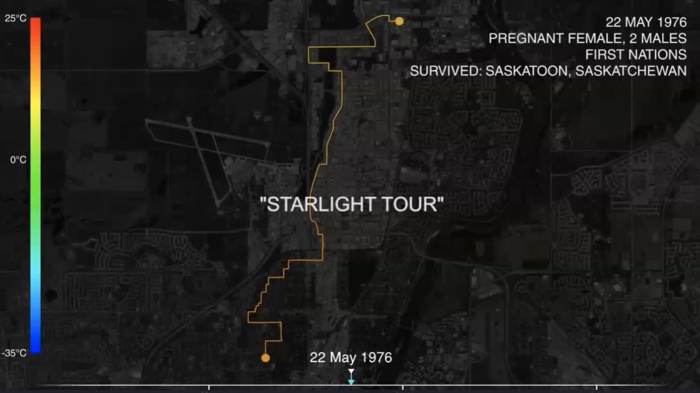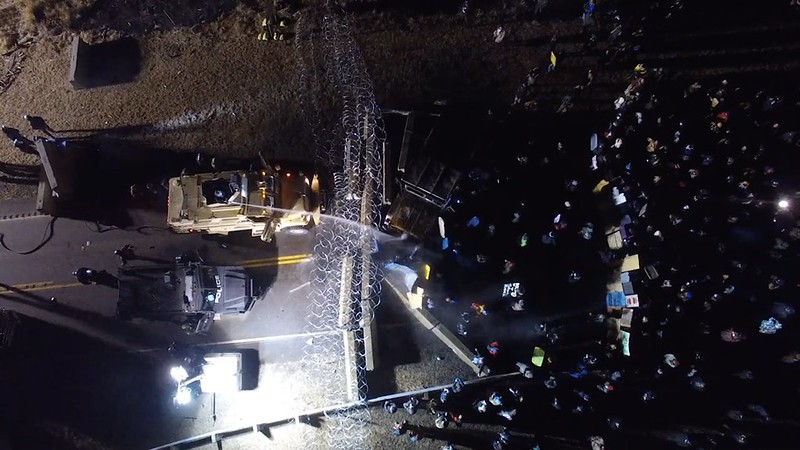When Jussi Parikka, curator together with Daphne Dragona of the exhibition Weather Engines at Onassis Stegi in Athens, introduced Susan Schuppli at the conference that accompanied the exhibition, he said that she was one of the persons from whom he had learnt the most. I think I can say something similar. Schuppli is one of the researchers and artists whose work I find consistently eye-opening. Each time I see her name in the list of contributors of a book about photography or an art show about nuclear culture, I know I’m going to discover a fresh and unexpected perspective on a topic I (naively) thought I was already familiar with.
Since 2016, Schuppli has been exploring the politics of cold, probing questions such as How can we think of cold rights within a warming world? or Which ethical injunctions should be deployed to protect its material integrity?

Susan Schuppli, Iceberg floating in the Olgastretet (Olga Strait), Svalbard Archipelago, production still, Learning from Ice: Sea Ice, 2020

Susan Schuppli, Learning from Ice: Ice Cores (video still), 2019
Her contribution for the Weather Engines exhibition is Cold Cases. The series of six videos explores thermo-politics, more precisely the strategic use of ‘cold’ through case studies that reveal how temperature experiences and effects are intertwined with legal issues, human rights violations, colonial legacies and environmental justice.

Susan Schuppli, Cold Cases, 2021-2022. Exhibition view at Onassis Stegi. Photo: © Stelios Tzetzias

Susan Schuppli, Cold Cases, 2021-2022. Exhibition view at Onassis Stegi. Photo: © Stelios Tzetzias
Three of the Cold Cases videos focus on the far-reaching geopolitical implications of the warming of the ice cap: how it redraws legal limits of nations, gives access to previously unattainable gas and oil reserves, opens up new shipping routes, displaces communities, threatens local ecologies, etc.
UNCLOS Article 234 reflects on the limited importance given to ice-covered areas in the UN Convention on the Law of the Sea. Within the 320 articles of the text, there is minimal acknowledgement of water in its frozen state, despite the fact that it makes up 2% of the world’s oceans. Another video, Right to Be Cold, was inspired by the petition submitted by Inuk environmentalist Shelia Watt-Cloutier seeking relief from violations resulting from climate change on behalf of herself and Inuit communities in the Canadian arctic. The demand was dismissed. Yet, the right to be cold remains a point of critical reflection, especially for indigenous communities living at the forefront of the effect of the climate crisis. Finally, the video Right to Break Ice focuses on the ethical and ecological question as to whether one has the ‘right’ to ‘break’ sea ice as if it were merely a strategic obstacle rather than a material that is integral to ecosystem stability.

Susan Schuppli, Cold Cases, 2021-2022. Freezing Deaths & Abandonment Across Canada
I’d like to focus this post on Schuppli’s other three Cold Cases projects because they scrutinise a series of cases and contexts in which cold is weaponised to control, punish and persecute communities, individuals, in particular racialised people.
The first video shows a timeline of instances of freezing deaths and abandonment in Canada. They are part of a clandestine police practice, known as “starlight tours”, which involves driving an Indigenous person to the outskirts of the city and leaving them there to walk home in sub-zero temperatures, risking death by hypothermia. The practice can be traced back to 1976 when members of Saskatoon police arrested three First Nations people (including an eight months pregnant woman) and abandoned them in sub-zero temperatures. Other occurrences of starlight tours were documented in the following decades. They were accompanied by indifference and a striking absence of justice.

Susan Schuppli, Cold Cases, 2021-2022. Weaponizing Water

Susan Schuppli, Cold Cases, 2021-2022. Weaponizing Water
The second video on the theme of cold abuse was the weaponization of water against water protectors at Standing Rock. On the night of the 20th of November 2016, when temperatures were below zero, law enforcement pommelled the people protesting against the Dakota Access Pipeline with water hoses. 300 people suffered from hypothermia as a result. Susan collaborated with Forensic Architecture to map out the vehicles, violence and weaponry deployed by the assailants. Their research demonstrates the indiscriminate use of what is called less-lethal weaponry such as tear glass clouds, projectiles and the use of water hoses to drench protestors as well as the campfires lightened up by activists to keep warm.

Susan Schuppli, Cold Cases, 2021-2022. Icebox Detention>
The third case documents las hieleras (Spanish for the iceboxes), overcrowded detention concrete rooms where migrants men, women and children are detained after they have crossed the US-Mexico border. Sometimes for days, without adequate furniture, with little food and in temperatures that are painfully cold. They are kept there before being transferred to U.S. Immigration and Customs Enforcement (or ICE, a rather cruel acronym in this context) facilities.
In las hieleras, cold functions as both punishment and deterrent after the extreme heat that people have endured to cross the border.
As the third case demonstrates, the strategic use of cold can occur outside of cold regions. And of course, it also takes place outside of America. One only has to think of the consequences of Europe’s strengthening of its border: some migrants die of hypothermia while crossing the Mediterranean, others risk their life and limbs when trying to leave Italy and cross the Alps to reach France.
As Schuppli notes, the sheer number of occurrences of these brutalities show that these are not accidents or one-offs. There’s a pattern that manifests the persistence of systemic racism. What is troubling is that in all the cases investigated by Schuppli and her collaborators, the authorities were aware of the potential harms of the freezing temperatures. They nonetheless went ahead, in a move of what the artist calls “plausible deniability”.
There is more information in the Resource pages of each Cold Case. Schuppli’s book Material Witness: Media, Forensics Evidence, published by MIT Press, is also precious if you are looking for context and background details.
The Weather Engines, an exhibition curated by Daphne Dragona & Jussi Parikka, remains open until 15 May at Onassis Stegi in Athens.







